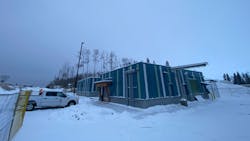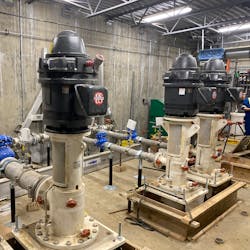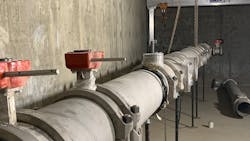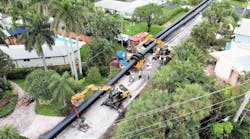First Nations communities in Canada have lagged in access to clean, reliable, and safe drinking water and sanitation services, but progress was finally made in Fort McMurray.
The Canadian government passed the Safe Drinking Water for First Nations Act in 2013 — a 40-year-long endeavor. In 2016, a Human Rights Watch report highlighted the disparity in access, pointing to lengthy drinking water and sanitation issues for thousands of First Nations people across the country.
By 2021, Canada’s Federal Court and Manitoba’s Court of Queen’s Bench approved a settlement requiring the government spend $6 billion over nine years to fund water infrastructure and operations for hundreds of reserves.
The Fort McMurray Reservoir and Pump Station is one project that received funding. Residents’ water and sewage services were provided by a truck haul system prior to this project. It was unreliable, increased health and environmental risks, and limited development of the reserve.
“Working together in unison to create a better environment in regard to public works water and sewer has been a great accomplishment between the Nation and its vendors/contractors,” said Steve Jani, the Nation’s acting chief sustainability officer.
McElhanney, a multidisciplinary engineering and land surveying firm, oversaw the design and construction. The Nation placed high importance on ease of maintenance, and McElhanney sought durable equipment that would streamline maintenance because the Nation would have full ownership and operation of it once complete.
This meant training of the Nation’s people was also a goal, and McElhanney established a $5,000 per year scholarship for a five year term to train and support the new operators.
“It is a major accomplishment for the Nation to complete a project of this scope and magnitude,” said Corey Wiltzen, a Nation member and a water plant operator trainee. “Not only are we securing safe drinking water for our present and future generations, we are also providing Nation members like myself with the opportunity to start a career in a vitally important field.
Andy Tenham, McElhanney project manager, noted the long-term outlook created a lasting impact.
“Construction of this facility is one thing, but long term successful operations is where the real value of this project is realized for the community,” Tenham said. “This was a traditional project with an extraordinary impact.”
Challenges for the project included pre-construction planning and detail. Federal, provincial, and local governments were in coordination with the general contractor Chandos Construction and the virtual design and construction team from Victaulic. Using the designs from McElhanney, the VDC team generated a 3D model to streamline assembly. One example of this technology’s success included a length of pipe running above a 12-inch suction line, which created a safety risk.
When work began, Victaulic provided a complete stainless steel pipe package in all necessary sizes to connect to the four on-site pumps. Flow control with butterfly valves, three-way actuated butterfly valves and hydraulic control valves were installed in addition to more than 250 couplings. Those couplings were assembled on 50 prefabricated spools, which simplified installation and kept the project on target.
“After many years of hard work, the Nation will finally be able to see this long-awaited goal come to fruition,” Tenham said. “Watching the Nation take pride in a functional and good-looking pump house, which I know is also high quality, after all these years is very satisfying. The National put in a lot of hard work from the very beginning, and this has been one of their goals for a very long time.”





